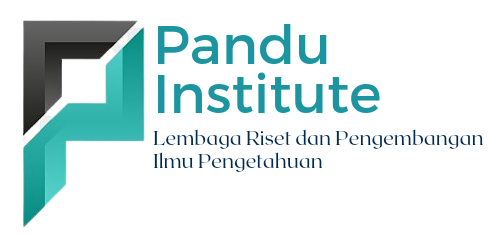PENCIPTAAN ALAM SEMESTA PERSPEKTIF AL-QUR’AN DAN SAINS (Studi Komparatif Tafsir Al-Azhar Dan Tafsir Al-Miṣbāḥ)
Abstract
The universe which has a very orderly and complex arrangement is a sign of the power of its creator. The universe in which there is earth as a place of life for humans and at the same time as a place of death for humans is created according to human needs. Some people think that the universe was created because of the role of the creator, namely God, but some think that the universe was not created by the creator. Among these thinkers was Isaac Newton of the 17th-18th centuries with the theory "that the universe is classical" which means that there was no creation from the creator. Then what about the material origin of the universe, the method and process of its creation by the creator, then many theories emerged including the "big bang" theory which stated that the universe originated from super dense matter andhot. The purpose of this study is to find out the opinion of Hamka and Quraish Shihab regarding the verses of the universe in refuting western theories and to find out the origins of the formation of the universe according to tafsir-Azhar and al-Mishbah. This type of research islibrary research with the method of thematic interpretation. Data collection refers to the bookTafsīr with adābī ijtimāʻī pattern, namely Tafsīr al-Azhar by Hamka and Tafsīr al-Mishbah by Quraish Shihab. Data analysis uses interpretation and analysis methodscomparative.
Downloads
References
Afrizal Nur, “M.Quraish Shihab dan Rasionalisasi Tafsir”, Jurnal Ushuluddin, Vol. 18(1), 2012.
Agus Purwadi, Kosmologi Haqqiyyah (Malang: UMM Press, 2002).
Ahmad Atabik, Konsep Penciptaan Alam, FIKRAH; Jurnal Ilmu Akidah dan Studi Keagamaan, Vol. 3 No. 1 (2015).
Alwi Shihab, Islam Insklusif: Menuju Terbuka dalam Agama, (Bandung: Mizan, 1999).
Atik Wartini, “Tafsir Feminis M. Quraish Shihab, jurnal Palastren”, Vol. 6(2),2013.
Avif Alviyah, "Metode Penafsiran Buya Hamka Dalam Tafsīr Al-Azhar," Ilmu Ushuluddin. STAI Sunan Drajat. Lamongan, Vol. 15 (1), 2016.
Bayong Tjasyono Hk., Ilmu Kebumian dan Antariksa Edisi Revisi,Bandung: ROSDA, 2013.
Hamka. Tafsir Al-Azhar (Singapura: Pustaka Nasional PTE LTD Singapura, tt).
Hasbi Ash-Shidiqy, Ilmu Al-Qur‟an Dan Tafsir, Semarang: Pustaka Rizki Putra, 2009, hlm. 6-7
Heru Juabdin Sada, “Alam Semesta dalam Perspektif Al-Qur’an dan Hadits’, Al-Tadzkiyyah : Jurnal Pendidikan Islam, Vol. 7, 2016.
Hidayatul Mardiyah, Ayat-ayat Alam Semesta dalam Al-Qur’an, SKRIPSI; Ilmu Ushuludin dan Studi Agama Fakultas Ushuludin dan Studi Agama UIN Raden Intan Lampung, 2018.
http://repository.uin-suska.ac.id/15136/8/8.%20BAB%20%20III_201926HK-S3.pdf (diakses pada tanggal 03 Maret 2021).
Intan Suryani, Suryanti, Studi Literatur: Konsep Pembentukan Janin dalam perspektif Al-Qur’an dan Sains, JPGSD, Vol. 07 No. 06 (2019).
Jamal Fakhri, Sains dan Teknologi dalam Al-Qur’an dan Implikasinya dalam Pembelajara, Jurnal Ta’dib; Jurnal Fakultas Tarbiyah IAIN Raden Intan Lampung Vol. 15 No. 01 (2010).
Kamus Besar Bahasa Indonesia (KBBI), https://kbbi.web.id/alam diakses pada tanggal 6-09-2022
Kenneth S. Krane, Modern Physics, Jakarta: UI-Press.
Kuntowijoyo, Islam sebagai Ilmu, Epistemologi, metodologi, dan Etika, Yogyakarta:Tiara Wacana, Cet. 1, 2006.
Lajnah Pentashihan Mushaf al-Qur'an, Qur'an Kemenag in Microsoft Word versi 2.0., https://lajnah.kemenag.go.id/unduhan/category/1-qkiw(diakses 06 -09- 2022).
Lajnah Pentashihan Mushaf al-Qur'an, Qur'an Kemenag in Microsoft Word versi 3.0.,
https://lajnah.kemenag.go.id, (diakses 02 -02- 2023).
Lufaefi, “Tafsir Al-Mishbah: Tekstualitas, Rasionalitas Dan Lokalitas Tafsir Nusantara”, Jurnal Substantia, Vol. 21(1), 2019.
Saiful Amin Ghafur, Biografi Para Mufasir Al-Quran, (Yogyakarta: Pustaka Insani Madani, 2008).
M. Anzaikhan, “Qadim dalam Perspektif Ilmu Falaq” Jurnal Pemikiran Islam, Vol. 1(1), 2021.
M. Quraish Shihab, https://scholar.google.co.id/citations?user=OMkvO-4AAAAJ&hl=en diakses tanggal 6 juli 2022.
M. Quraish Shihah, Tafsir Al-Miṣbāḥ Pesan : Kesan dan Keserasian Al-Qur’an (Jakarta: Lentera Hati, 1426H/2005M).
M. Yunan Yūsuf, Alam Pikiran Islam Pemikiran Kalam dari Khawarij ke Buya Hamka (t.k.: Prenada Media Group, 2014).
Muhammad Ramadhan dan Bintoro A. Subagyo, “Pengaruh Konstanta KosmologiTerhadap Alam Semesta”, Jurnal Sains dan Seni ITS, bahwa alam itu statisol. 05(2), 2016.
Muhammad Zaini, “Alam Semesta Menurut Al-Qur’an”, Journal of Qur’anic Studies. Vol. 03(1), Universitas Islam Negeri Ar-Raniry Banda Aceh, 2018.
Musyarif, "Buya Hamka: Suatu Analisis Sosial terhadap Kitab Al-Azhar", Al-Ma'arief: Jurnal Pendidikan Sosial dan Budaya. Vol. 1, 2019.
Paisal Siregar, Penciptaan Alam Menurut Al-Qur’an dan Sains, Jurnal UINSu.
Pascasarjana UIN Raden Intan,Buku Pedoman Penulisan Tesis dan Disertasi (Lampung: Pascasarjana UIN Raden Intan, 2019).
Rahmi Nur Fitri, "Hamka sebagai Sejarahwan : Kajian Metodologi Sejarah Terhadap Karya Hamka", Fuaduna: jurnal Kajian Keagamaan dan Kemasyarakatan UIN Sunan Kalijaga Yogyakarta, Vol. 4 (1), 2020.
Ramadhan, “Konsep Terpisahnya Langit dan Bumi Studi Analisis atas Penafsiran Fakhruddīn ar-Rāzī dalam Mafātiḥ al-Ghaīb terhadap Q.S Al-Anbiyā’ Ayat 30”, Jurnal El-Waroqoh, Vol.04 (1), IDIA, 2020.
Rizki Firmansyah, Teori Penciptaan Langit dan Bumi dalam Tafsir al-Jawāhir Karya Ṭanṭāwī Jauharī” (Tesis, Pascasarjana UIN Sunan Kalijaga, 2015.
Rosnani Hashim (ed), "Hamka Intellectual and Sosial Transformation of the Malay World", in Conversation Islamic Intellectual Traditionin the Malay Archipelago, Kuala Lumpur, Pustaka Perdana, 2010.
Siti Maunah, Hakikat Alam Semesta Menurut Filsuf Islam, Jurnal Madaniyah, Vol. 9 No. 1 (2019), hlm. 5
Tiara Wacana, Cet. 1, 2006.
Usep Taufik Hidayat, "Tafsir Al-Azhar : Menyelami Kedalaman Tasawuf Hamka", Al-Turāṡ UIN Jakarta, Vol. 21 (1), 2015.







.png)







